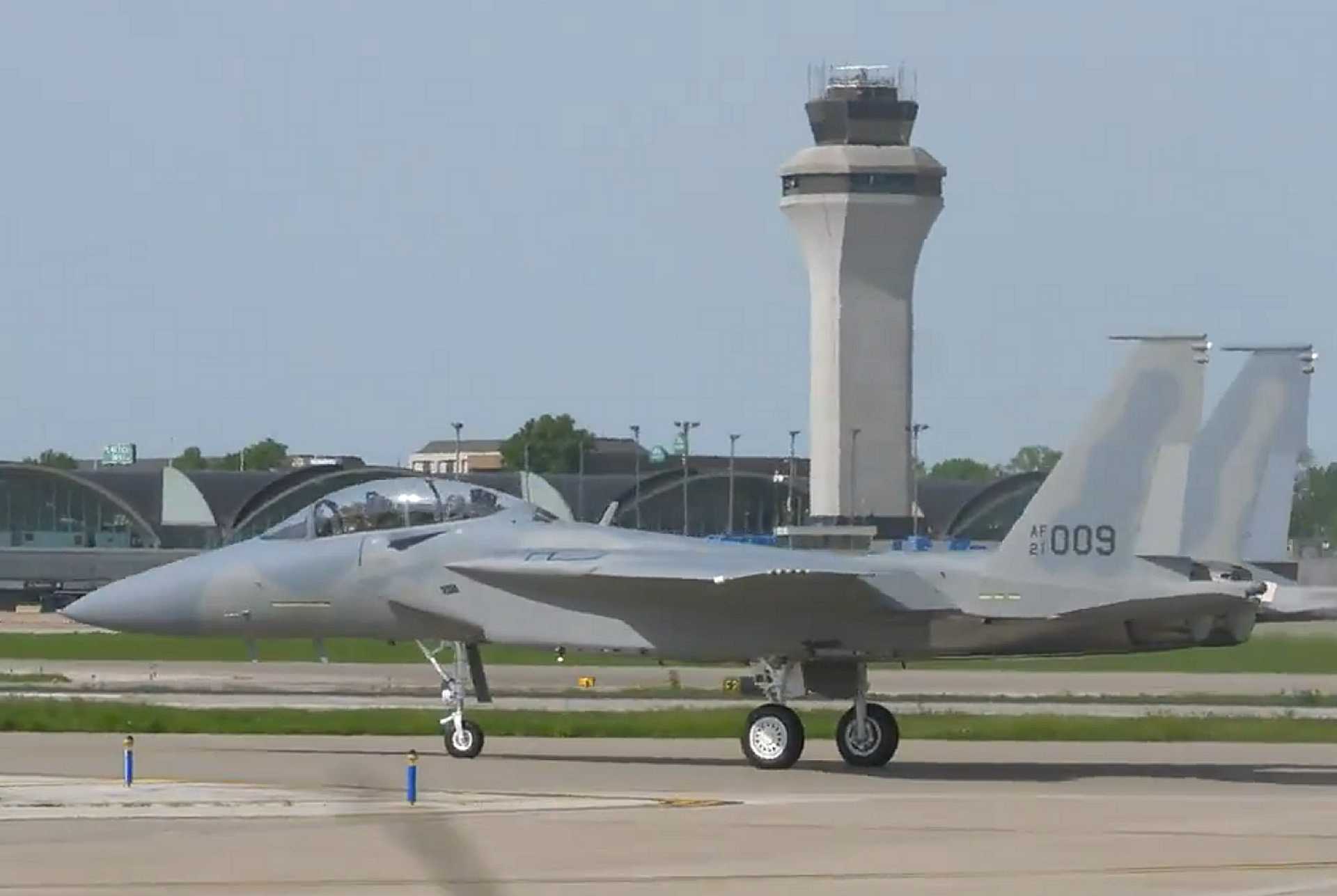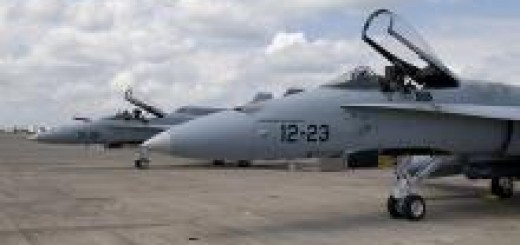Ninth New Boeing F-15EX Fighter Jet Joins Oregon’s 142nd Fighter Wing Amid USAF Modernization Push

{loadposition bannertop}
{loadposition sidebarpub}
On May 1, 2025, via its official X (formerly Twitter) account, Boeing Defense confirmed the delivery of the ninth F-15EX Eagle II multi-role combat aircraft to the 142nd Fighter Wing of the Oregon Air National Guard, stationed at Portland Air National Guard Base. This aircraft, bearing military registration 21-009 and factory number EX-09, marks the first delivery from the second production lot, representing a significant milestone in the U.S. Air Force’s modernization roadmap.Follow Army Recognition on Google News at this link
Boeing delivers the ninth F-15EX Eagle II to the 142nd Fighter Wing of the Oregon Air National Guard at Portland ANG Base, marking the first aircraft of the second production lot under the USAF’s modernization program. (Picture source: Boeing Defense)
The F-15EX Eagle II is the latest evolution of the iconic F-15 air superiority fighter, adapted with 21st-century technologies to address current and future threat environments. The delivery of EX-09 signifies a continuation of the U.S. Air Force’s transition from aging F-15C/D platforms to a more advanced and future-proof airframe. For the 142nd Fighter Wing, this aircraft joins two previously received units—EX-07 and EX-08—from the initial production batch, reinforcing their capabilities for homeland defense and operational deployments.
Boeing’s ongoing production contract calls for up to 48 F-15EX aircraft to be delivered across three lots, under a program designed to boost the U.S. Air Force’s operational readiness, reliability, and mission versatility. EX-09 serves as the inaugural aircraft of Lot 2, demonstrating Boeing’s ability to meet high production tempo demands while integrating the latest defense technologies.
The F-15EX Eagle II retains the physical robustness and mission endurance of its predecessor but introduces substantial improvements that reposition the aircraft as a multi-role powerhouse. Key enhancements include the Open Mission Systems (OMS) architecture that enables seamless integration of future software and hardware updates, making the jet highly adaptable. Its fly-by-wire control system provides greater agility and ease of maintenance over older mechanical configurations. Moreover, the Eagle Passive/Active Warning Survivability System (EPAWSS) offers advanced threat detection, jamming, and countermeasures for modern electronic warfare scenarios. The aircraft also features the AN/APG-82(V)1 Active Electronically Scanned Array (AESA) radar, providing enhanced targeting range and fidelity. With an increased payload capacity of up to 29,500 pounds and the ability to carry a full loadout of up to 22 air-to-air missiles, the F-15EX is equally capable in strike and air superiority missions.
The 142nd Fighter Wing of the Oregon Air National Guard plays a vital role in the defense of the U.S. Pacific Northwest. Based at Portland ANG Base, the unit is responsible for the Aerospace Control Alert mission under NORAD, intercepting potential airspace intrusions and supporting national defense operations. As the first operational unit to receive and deploy the F-15EX, the 142nd is at the forefront of technological integration and readiness transformation within the Air National Guard. The arrival of EX-09 not only reinforces the wing’s mission effectiveness but also marks a broader strategic push to prepare for high-end conflicts and rapidly evolving airpower requirements. As regional and global threats continue to evolve, the F-15EX ensures the U.S. Air Force maintains its dominance in contested airspace environments.
The F-15EX is not simply an upgraded Eagle—it represents a fundamental transformation of the aircraft’s architecture, systems, and operational scope. One of the most critical enhancements is its Open Mission Systems (OMS) architecture, which allows for rapid and seamless integration of new technologies. Unlike the legacy F-15C/D models, which rely on closed, legacy software that is difficult and costly to update, the F-15EX can quickly incorporate new sensors, software patches, and weapons, allowing it to evolve in step with battlefield requirements. This digital backbone is powered by next-generation processors and data buses that streamline mission system integration.
The aircraft’s survivability is dramatically improved through the inclusion of EPAWSS, an advanced suite for electronic warfare that combines threat warning, jamming, and countermeasures into a single integrated system. This gives the F-15EX the ability to detect and respond to radar-guided and infrared threats far more effectively than any previous F-15 variant. The cockpit has been redesigned with a Large Area Display (LAD) similar to that of the F-35, enabling pilots to manage mission systems, weapons, and flight data in a more intuitive and less time-consuming manner. Combined with advanced helmet-mounted displays, this dramatically improves situational awareness.
In the realm of sensors, although both the F-15C/D and F-15EX now share the AN/APG-82 AESA radar, the EX’s greater computing power and system integration allow it to exploit the radar’s capabilities to a fuller extent. Its network connectivity and data fusion capacity turn it into a powerful node within a larger air combat network, ideal for both command roles and combat engagement.
Weaponry is another area of radical advancement. The F-15EX is capable of carrying up to 22 air-to-air missiles—nearly triple the loadout of an F-15C—and includes configurations for long-range air-to-ground precision weapons as well as next-generation hypersonic missiles. This payload flexibility, paired with an extended combat radius due to conformal fuel tanks, enhances the F-15EX’s versatility across mission types and theaters of operation. Additionally, the F-15EX airframe is built for 20,000 flight hours—double the lifespan of the legacy fleet, which is nearing the end of its useful service life. This longevity ensures a lower cost per flight hour and reduces the need for major structural overhauls, easing the logistical burden on Air Force and National Guard units.
The F-15EX Eagle II brings a generational leap in capability, flexibility, and combat endurance. It allows the U.S. Air Force to field a robust, heavily armed, and technologically advanced fighter quickly and cost-effectively. For the 142nd Fighter Wing and other units awaiting future deliveries, the F-15EX is more than a replacement—it’s the foundation of next-generation air superiority.

{loadposition bannertop}
{loadposition sidebarpub}
On May 1, 2025, via its official X (formerly Twitter) account, Boeing Defense confirmed the delivery of the ninth F-15EX Eagle II multi-role combat aircraft to the 142nd Fighter Wing of the Oregon Air National Guard, stationed at Portland Air National Guard Base. This aircraft, bearing military registration 21-009 and factory number EX-09, marks the first delivery from the second production lot, representing a significant milestone in the U.S. Air Force’s modernization roadmap.
Follow Army Recognition on Google News at this link
Boeing delivers the ninth F-15EX Eagle II to the 142nd Fighter Wing of the Oregon Air National Guard at Portland ANG Base, marking the first aircraft of the second production lot under the USAF’s modernization program. (Picture source: Boeing Defense)
The F-15EX Eagle II is the latest evolution of the iconic F-15 air superiority fighter, adapted with 21st-century technologies to address current and future threat environments. The delivery of EX-09 signifies a continuation of the U.S. Air Force’s transition from aging F-15C/D platforms to a more advanced and future-proof airframe. For the 142nd Fighter Wing, this aircraft joins two previously received units—EX-07 and EX-08—from the initial production batch, reinforcing their capabilities for homeland defense and operational deployments.
Boeing’s ongoing production contract calls for up to 48 F-15EX aircraft to be delivered across three lots, under a program designed to boost the U.S. Air Force’s operational readiness, reliability, and mission versatility. EX-09 serves as the inaugural aircraft of Lot 2, demonstrating Boeing’s ability to meet high production tempo demands while integrating the latest defense technologies.
The F-15EX Eagle II retains the physical robustness and mission endurance of its predecessor but introduces substantial improvements that reposition the aircraft as a multi-role powerhouse. Key enhancements include the Open Mission Systems (OMS) architecture that enables seamless integration of future software and hardware updates, making the jet highly adaptable. Its fly-by-wire control system provides greater agility and ease of maintenance over older mechanical configurations. Moreover, the Eagle Passive/Active Warning Survivability System (EPAWSS) offers advanced threat detection, jamming, and countermeasures for modern electronic warfare scenarios. The aircraft also features the AN/APG-82(V)1 Active Electronically Scanned Array (AESA) radar, providing enhanced targeting range and fidelity. With an increased payload capacity of up to 29,500 pounds and the ability to carry a full loadout of up to 22 air-to-air missiles, the F-15EX is equally capable in strike and air superiority missions.
The 142nd Fighter Wing of the Oregon Air National Guard plays a vital role in the defense of the U.S. Pacific Northwest. Based at Portland ANG Base, the unit is responsible for the Aerospace Control Alert mission under NORAD, intercepting potential airspace intrusions and supporting national defense operations. As the first operational unit to receive and deploy the F-15EX, the 142nd is at the forefront of technological integration and readiness transformation within the Air National Guard. The arrival of EX-09 not only reinforces the wing’s mission effectiveness but also marks a broader strategic push to prepare for high-end conflicts and rapidly evolving airpower requirements. As regional and global threats continue to evolve, the F-15EX ensures the U.S. Air Force maintains its dominance in contested airspace environments.
The F-15EX is not simply an upgraded Eagle—it represents a fundamental transformation of the aircraft’s architecture, systems, and operational scope. One of the most critical enhancements is its Open Mission Systems (OMS) architecture, which allows for rapid and seamless integration of new technologies. Unlike the legacy F-15C/D models, which rely on closed, legacy software that is difficult and costly to update, the F-15EX can quickly incorporate new sensors, software patches, and weapons, allowing it to evolve in step with battlefield requirements. This digital backbone is powered by next-generation processors and data buses that streamline mission system integration.
The aircraft’s survivability is dramatically improved through the inclusion of EPAWSS, an advanced suite for electronic warfare that combines threat warning, jamming, and countermeasures into a single integrated system. This gives the F-15EX the ability to detect and respond to radar-guided and infrared threats far more effectively than any previous F-15 variant. The cockpit has been redesigned with a Large Area Display (LAD) similar to that of the F-35, enabling pilots to manage mission systems, weapons, and flight data in a more intuitive and less time-consuming manner. Combined with advanced helmet-mounted displays, this dramatically improves situational awareness.
In the realm of sensors, although both the F-15C/D and F-15EX now share the AN/APG-82 AESA radar, the EX’s greater computing power and system integration allow it to exploit the radar’s capabilities to a fuller extent. Its network connectivity and data fusion capacity turn it into a powerful node within a larger air combat network, ideal for both command roles and combat engagement.
Weaponry is another area of radical advancement. The F-15EX is capable of carrying up to 22 air-to-air missiles—nearly triple the loadout of an F-15C—and includes configurations for long-range air-to-ground precision weapons as well as next-generation hypersonic missiles. This payload flexibility, paired with an extended combat radius due to conformal fuel tanks, enhances the F-15EX’s versatility across mission types and theaters of operation. Additionally, the F-15EX airframe is built for 20,000 flight hours—double the lifespan of the legacy fleet, which is nearing the end of its useful service life. This longevity ensures a lower cost per flight hour and reduces the need for major structural overhauls, easing the logistical burden on Air Force and National Guard units.
The F-15EX Eagle II brings a generational leap in capability, flexibility, and combat endurance. It allows the U.S. Air Force to field a robust, heavily armed, and technologically advanced fighter quickly and cost-effectively. For the 142nd Fighter Wing and other units awaiting future deliveries, the F-15EX is more than a replacement—it’s the foundation of next-generation air superiority.






